Archive
11 January 2020
Storm at sea: the inside story

A subject of rollicking sea shanties the world over, storms at sea have always fired people’s imaginations. But knowledge of what happens underneath the waves is not quite as universal. Femke de Jong, Caroline Katsman and Carine van der Boog are preparing to don their sou’westers to investigate the inside story.
29 December 2019
The turbulent waters of the Eastern Scheldt
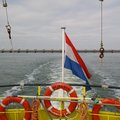
Whenever there is a problem with the Eastern Scheldt storm surge barrier, the Dutch get worried. The last time the barrier made the news was in 2013, when the stability of the barrier’s foundation protection was compromised.
25 December 2019
The Wadden Mud Motor project: making nature do the work
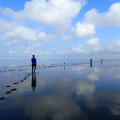
The tidal flats of the Wadden is where land and water meet. This natural environment has become familiar territory for researcher Bram van Prooijen and PhD Irene Colosimo, who both work at TU Delft’s department of Hydraulic Engineering. It’s where they are carrying out the Mud Motor project hoping it will provide them with the answer to a vital question: how to make nature work for us in such a way as to preserve the Wadden coast in a sustainable way.
22 December 2019
Follow the pretty pebbles
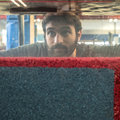
Rivers meander: it’s what they do. They make their way through the landscape twisting and turning as they flow. In the Netherlands a meandering river has become a rarity. ‘Many rivers worldwide have been ‘humanised’,’ says Victor Chavarrias who is researching rivers, with the Rhine as his case study. ‘200 years ago the Rhine meandered strongly. That made life in the floodplain dangerous and the transportation of goods very inefficient. To overcome these difficulties in the 19th century they started cutting the bends and narrowing the river with the construction of groynes.
17 December 2019
Building offshore wind turbines quickly and gently without disturbing marine life

How can you build foundations for offshore wind turbines creating as little disturbance as possible?
14 December 2019
Mangroves caught in the middle

In a channel at TU Delft’s Water lab a stream of purple-tinted water makes its way past thousands of small wooden pegs. The water was dyed by PhD-candidate Son Truong Hong, who is closely observing the flow with an empty bottle of paint in his hands. This test forms part of his research into the importance of the mangrove forests in the Mekong Delta estuaries. Son is fascinated by the tangled roots of these extraordinary trees. What is the mangrove’s role in preventing river bank erosion? And, most crucially, how much of the mangrove forests needs to remain to support a healthy ecosystem?
09 December 2019
Waddenacademieprijs Vincent Vuik
Vincent Vuik has been awarded the price of the Wadden Academy for his PhD thesis Building Safety with Nature. Salt Marshes for Flood Risk Reduction.
09 December 2019
Student project opportunity
Fact-finding study for flooding of Venice (Nov 2019) and performance of the MOSE barrier.
08 December 2019
Continuously scanning the coast
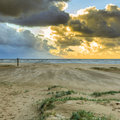
Hotel Atlantic in Kijkduin overlooks the North Sea. On its deserted roof a state of the art laser scanner is monitoring the beach every hour, 24/7. Sander Vos hopes the resulting data will provide insight into the restoration of the coast after a storm when part of the beach and fore dunes disappear into the sea. With the information provided by the scanner he and his TU Delft colleagues hope to become ‘coastal weathermen’ who will be able to predict exactly how the beach behaves after a storm.
04 December 2019
Marker Wadden: Building wetlands with soft mud
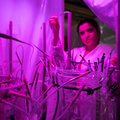
Markermeer, a manmade lake in the North of Holland, functions as a freshwater reservoir and a buffer against floodwaters and droughts. Its 680 sq kilometres have a predominantly soft mud layer at the lake’s bed. Due to its shallow depth of 3 to 5 meters, the wind-induced waves are strong enough already at low wind speeds, to move the soft mud through the water. The dam, connecting Lelystad and Enkhuizen, add to the trapped sediment causing turbidity. The severe turbidity hampers light penetration through water and the overall ecological development. Natuurmonumenten and its consortium partners (Boskalis, Van Oord, Royal Haskoningh DHV, Deltares and Alterra) are committed to bringing life back to this lake. By removing the mud layer from the lake’s bed and re-using the soft sediment to build wetlands, they are expecting to transform a part of the lake into the new nature reserve ‘Marker Wadden’.